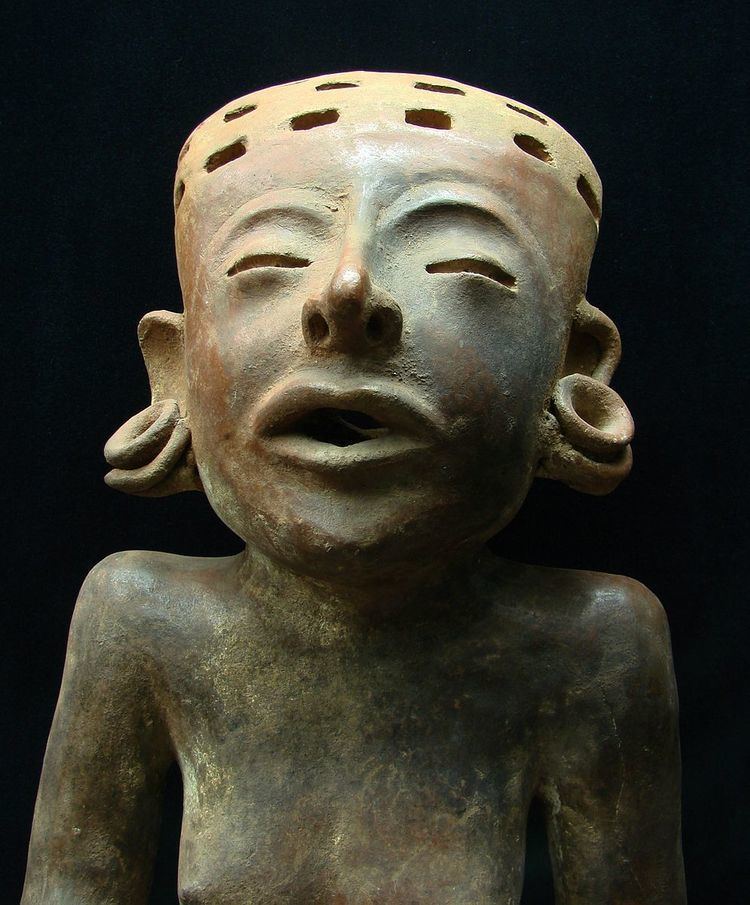 | ||
A plug (sometimes earplug or earspool), in the context of body modification, is a short, cylindrical piece of jewellery commonly worn in larger-gauge body piercings. Because of their size — which is often substantially thicker than a standard metal earring — plugs can be made out of almost any material. Acrylic glass, metal, wood, bone, stone, horn, glass, silicone or porcelain are all potential plug materials.
Plugs are commonly, and have historically, been worn in the ears. They can, however, be inserted into any piercing.
In order for a plug to stay put within a piercing, the ends of its cylindrical shape are often "flared out," or the plug is fastened in place by o-rings. Combinations of these two methods may also be used.
History
During the ancient Egyptian New Kingdom, both sexes wore a variety of jewelry, including earplugs and large-gauge hoop-style earrings.
An earspool, or an ear tunnel, is an ornament worn inserted into the earlobe. They were particularly used among indigenous cultures of the Americas, including Mesoamerican cultures such as the Maya and the Aztecs. Their use could sometimes significantly stretch the earlobe. In Mesoamerica they were used from as early as the Preclassic Period (2000-100 BC).
Inca men wore gold or silver plugs in the ears, which indicated their nobility. Their stretched piercings, which could reach the size of two inches, later inspired a Spanish nickname for the Inca people: orejones ("big ears").
Ivory earplugs have been used by the Hmong people.
Silver plugs, called rombin, are worn by Aka women.
